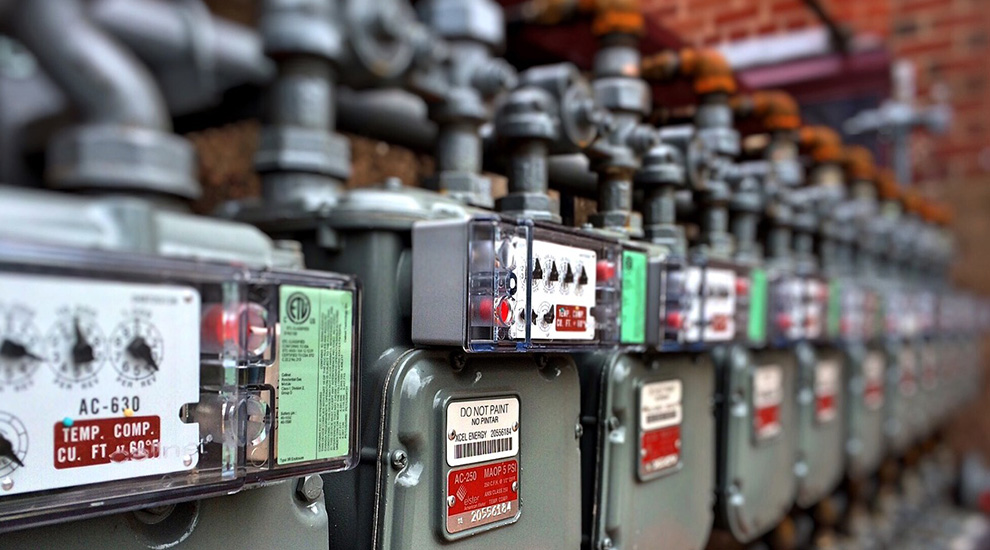An Energy Blockchain for European Prosumers
A Bitcoin-style virtual currency could save Europe’s power grids from reaching breaking point as more and more “prosumers” come on line, the European Commission’s Horizon magazine reports. Prosumers ‒ a buzzword in the emerging sharing economy ‒ are consumers who also put energy back into the network from domestic wind turbines and solar panels.
The European Union is aiming for an 80 percent reduction in greenhouse gases by 2050, but European energy distribution networks are organized top-down, for large providers that distribute energy to consumers either directly or through smaller local providers.
More and more consumers are becoming prosumers, who produce part or all of their own energies with renewable “green” technologies such as solar energy, and are willing to trade energy with their peers. It’s estimated that in countries like Belgium, 8 to 12 percent of households have become prosumers, and the trend is expected to continue. However, recent studies show that if 50 percent of households were to become energy-trading prosumers, the European energy distribution networks would become inefficient and waste significant amounts of green energy.
Local energy exchange grids could permit reducing wastes and making the system as a whole more efficient. But for this to happen the European power grids need to be turned into “smart grids” that permit producing and consuming energy locally, cutting down on the transmission loss which occurs over longer distances.
Enter Scanergy, a scalable and modular system for energy trading between prosumers. The project, funded by the European Union’s Seventh Programme for research, technological development and demonstration, is based on an intelligent multi-agent system that can manage the electricity produced and consumed both on a lower level (dwellings and neighborhoods) as well as on a higher level (cities). The Scanergy system enables the smart energy trade between prosumers, while coping with the inherent real-time dynamism in electricity demand and supply.
The project suggests an online currency to boost local trade between energy producers and consumers.
“Prosumers create decentralized digital money themselves,” says Mihail Mihaylov, a researcher at the AI lab of the Vrije Universiteit Brussel (VUB). “They want to know what their return on investment is. This is one problem our proposed concept addresses. We lower the risk of policy change.”
Scanergy won the best demo award at the International Conference on Autonomous Agents and Multiagent Systems in Istanbul in May 2015. The demo used featured a replica of a 62-home typical Belgian neighborhood complete with an electrical substation and tiny solar panels that drew power from a spotlight overhead.
Besides the VUB, Sensing & Control Systems of Barcelona is participating in the Scanergy project. The company specializes in bringing to the market web-based solutions related to remote control, monitoring and real-time tracking in several markets, including energy management.
“Now our next step is to validate this in a real scenario, said Sergio Jurado, who coordinates the project at Sensing & Control Systems. “We need to work with producers and retailers in a large-scale deployment.”
The Scanergy project includes a real-time automated market trading system called NRG-X-Change, Intel IQreported.
“This exchange system checks the supply of renewables and the overall demand for electricity in a given neighborhood via its smart meters every 15 minutes, then automatically brokers trades with other neighborhoods for any excess or shortfall,” according to Intel IQ. “It pays a Bitcoin-like digital currency the researchers call NRGcoin to those who feed energy back into the grid according to actual electricity usage rather than predicted usage.”
Mihaylov, Jurado, and other researchers authored the paper “NRGcoin: Virtual currency for trading of renewable energy in smart grids,” published in the Proceedings of the 11th International Conference on the European Energy Market (EEM14).
The paper introduces NRGcoin. Prosumers in the smart grid trade locally produced renewable energy using NRGcoins, the value of which is determined on an open currency exchange market. Similar to Bitcoin, this currency offers numerous advantages over fiat currency, but, unlike Bitcoin, it is generated by injecting energy into the grid, rather than spending energy on computational power.
“In addition, we propose a novel trading paradigm for buying and selling green energy in the smart grid,” note the researchers. “Our mechanism achieves demand response by providing incentives to prosumers to balance their production and consumption out of their own self-interest.”
The interest demonstrated by the European Commission promises to stimulate the emerging sector of blockchain applications for prosumer-oriented, P2P energy markets. However, introducing yet another altcoin, instead of relying on the proven Bitcoin blockchain or the fast-growing Ethereum blockchain, seems awkward.
Also, giant administrations like the European Commission aren’t known for moving with the agility needed by fast-developing emerging technology. In fact, as reported by Bitcoin Magazine earlier this week, the TransActive Grid project of Brooklyn Microgrid developer LO3 Energy and blockchain technology developer ConsenSys, a startup focused on Ethereum applications, is creating a connected smart grid for local energy exchange based on the Ethereum blockchain and has a working pre-operational prototype.
The post An Energy Blockchain for European Prosumers appeared first on Bitcoin Magazine.



